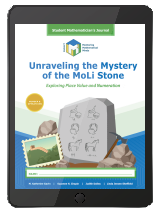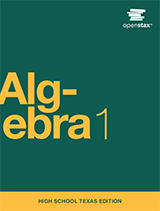Search Listing Name

product:
Project M3: Level 3-4: Unraveling the Mystery of the MoLi Stone: Exploring Place Value and Numeration Student Mathematician's Journal 1 Year License
The Student Mathematician’s Journal allows students to explore simulated or real-life problems and help them to think, write, and read like mathematicians. It encourages students to reflect on what they have learned in each lesson, think deeply about mathematics, and communicate in writing on worksheets.
In this unit, students explore our numeration system in depth. Students begin by looki
product:
IM v.360: Grade 3 Teacher Guide Set
IM® v.360 K-5 Math is an IM Certified curriculum providing trusted, highly rated materials to ensure students thrive in mathematics. Each Illustrative Mathematics lesson has four phases, from pre-unit practice modules to cool downs, focusing students’ attention on definitions, notations, and graphical conventions contributing to the development of real numbers.
Grade 3
The big ideas in grade 3 include: developing understanding of multiplication and division and strategies for multiplication and division within 100; developing unde
product:
OpenSciEd Unit 8.6: Natural Selection & Common Ancestry Spanish Student Edition
OpenSciEd Middle School science program addresses all middle school NGSS standards. This comprehensive science curriculum empowers students to question, design, investigate, and solve the world around them.
- Phenomenon Based - Centered around exploring phenomena or solving problems
- Driven by Student Questions - Storyline based on students’ questions and ideas
- Grounded in Evidence - Incremental building and revision of ideas based on evidence
- Collaborative - class and teacher figure


product:
OpenStax Algebra 1 Texas Edition Student Textbook Set
Algebra 1 is a complete high school algebra curriculum that is 100% aligned with the Texas Essential Knowledge and Skills (TEKS) and the English Language Proficiency Standards (ELPS). OpenStax Algebra 1 is a high-quality instructional material (HQIM) that is flexible enough for core adoption and adaptable enough to support a wide range of teaching strategies and student needs. Algebra 1 is a research-backed curriculum designed to strengthen teaching and learning in all classrooms.

product:
Project M3: Level 4-5: The Tenth Street Pet Sanctuary: Understanding and Using Decimals Teacher Guide + 3 Year License
This unit introduces students to how the decimal numeration system takes place. Students learn how the powers of 10 are used to create decimals and understand the role of the decimal point as the marker for the end of whole numbers.
The Teacher Guide is designed to provide background information on the mathematics being taught in this unit, the learning environment, mathematical communication, and differentiated instruction. Also included:
- Skill Assumptions
- Pacing Gu
